| New varieties of food-feed sorghum are meeting the basic needs of India?s 208 million crop-livestock farmers, as well as feeding its growing human population. | |
|
The single most important ruminant feed resource on many of the small crop-livestock farms of Asia and Africa is not grass but rather the stalks, leaves and other remains of crop plants after harvesting. In India, for example, 44% of the feed annually sustaining all the country’s cattle, buffalo, goats, sheep and camel populations is made up of such crop ‘wastes’. The rest comes from planted forages and a shrinking area of pastures and other common lands. Expensive concentrates—the mainstay of livestock production in rich countries—are used only very occasionally. While crop residues (straw and stover) have become a main feed for farm animals of the South, crop breeders until recently continued to focus solely on increasing grain yields. But a research partnership between India’s National Research centre for Sorghum (NRCS), the International Crops Research Institute for the Semi-Arid Tropics (ICRISAT) and ILRI is redressing this oversight in India’s all-important sorghum crop, grown on nearly 10,000,000 hectares on the country. The research partners incorporated fodder quality traits in India’s crop breeding trials and in doing so, led breeders to identify sorghum varieties with high yields of both grain and stover as well as improved stover quality.
ILRI then proceeded to establish facilities for animal nutrition studies using large and small ruminants at ICRISAT’s Patancheru headquarters, close to the NRCS. These facilities enabled the research partners to make a stepwise evaluation of the relationships between fodder from different sorghum lines and livestock productivity—and to find a simple way of assessing these. Animal experimentation, while itself impractical as a routine screening tool, quickly laid a sound basis for developing and validating simple laboratory assessment methods and for quantifying potential impacts on livestock productivity. In 2001 work began with combined feeding and laboratory trials of stover obtained from a wide range of sorghum varieties and hybrids. The trials simulated diverse on-farm circumstances, including those where stover is scarce, abundant and supplemented with other forages, because fodder qualities depend on a farm’s total feed resources. Across India’s great drylands, for example, where insufficient feed prevents animals from eating until they have satisfied their appetites, a fodder trait for ‘voluntary feed intake potential’ is likely to be irrelevant while another for ‘feed digestibility’ is critically important. Sorghum varieties were investigated for their morphological characteristics and structure (leaf blade:leaf sheath:stem proportions, plant height, stem diameter, residual green leaf area), chemical constituents (protein, fiber, sugar) in the stover and in vitro fermentation characteristics (true and apparent digestibility, rate of fermentation, partitioning of fermentation products). Results showed that fodder quality traits measured in the laboratory could be used to predict and account for at least 80% of the variation in relevant livestock productivity traits, such as digestible organic matter intake and nitrogen balance. Traits were chosen also for the ease with which they could be measured (e.g. plant height, stem diameter) and/or be accurately predicted by near-infrared spectroscopy (NIRS). Importantly, use of NIRS technology allowed all the partners in the project, including those with no livestock feeding facilities, easy access to developed and validated NIRS prediction equations and consequently phenotyping for stover fodder quality capability. NRCS staff seconded to ILRI’s livestock nutritional facilities on ICRISAT’s Patancheru campus used the facilities and NIRS equations to comprehensively assess all newly submitted sorghum cultivars.
Breaking new ground in food-feed crops By generating superior dual-purpose sorghum varieties suited to India’s millions of smallholder farmers, this collaborative research has been path-breaking in demonstrating that traits for stover fodder quality and quantity can be incorporated into existing breeding programs to improve grain yields—and with minimum investments in equipment, staff and labour and minimum transaction costs for the collaborating institutions.
It further offers a practical two-step approach to development of food-feed crops. First, exploit dual-purpose traits in existing cultivars by complementing traditional crop improvement programs with information about the quantity and quality of expected yields of crop residues for livestock feed. Second, target dual-purpose crops for genetic enhancement. The first approach, comparatively cheap and logistically feasible, promises quick benefits for resource-poor farmers. The second, more strategic, approach requires more investments and benefits farmers later and over the longer term. In a world of scarce and rapidly diminishing land, water, fodder and other natural resources, both approaches merit the world’s attention.
Contacts
For further information about ILRI’s activities in Asia contact:
|
Author Archives: ILRIComms
Award-winning ILRI geneticist takes up prestigious UK appointment
| After 13 years with ILRI, geneticist Oliver Hanotte is taking up a new appointment at the University of Nottingham. |
 ILRI geneticist Olivier Hanotte starts his new position as professor of population genetics and conservation at the University of Nottingham, UK on 1st January. He will also be the director of a charity based at the university called Frozen Ark. The charity is concerned with the ex situ conservation of endangered animals, including wildlife as well as livestock. ILRI geneticist Olivier Hanotte starts his new position as professor of population genetics and conservation at the University of Nottingham, UK on 1st January. He will also be the director of a charity based at the university called Frozen Ark. The charity is concerned with the ex situ conservation of endangered animals, including wildlife as well as livestock.Hanotte joined ILRI in 1995 when the Nairobi-based International Laboratory for Research on Animal Diseases (ILRAD) merged with the Addis Ababa-based International Livestock Centre for Africa (ILCA). Since then ILRI has shifted from a predominantly African focus to a global focus, with ILRI offices not only in East, West and Southern Africa but also in South Asia and South East Asia, providing new opportunities for Hanotte’s research focus. Research highlights Contacts:
Further information: Do you want your research to make a greater difference? |
Rift Valley fever ‘may strike again’ soon
Renewing African agriculture
Making Africa's diversity and complexity work for, rather than against, its small farmers
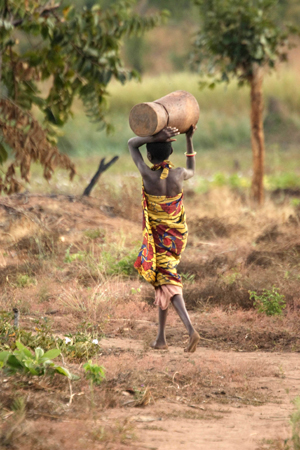 As 2008 draws to a close, I and other colleagues of mine in the Consultative Group on International Agricultural Research, which supports my Africa-based institute, the International Livestock Research Institute, have been reflecting on a ‘New Deal’ for African farmers, who face special agricultural conditions that demand special attention.
As 2008 draws to a close, I and other colleagues of mine in the Consultative Group on International Agricultural Research, which supports my Africa-based institute, the International Livestock Research Institute, have been reflecting on a ‘New Deal’ for African farmers, who face special agricultural conditions that demand special attention.
Rural Africa remains largely hungry and poor despite decades of improved agricultural technologies, crop varieties and management and policy options generated by agricultural science to help solve the continent’s special agricultural challenges.
What’s been missing is an integrated approach to African agriculture that is radically collaborative, holistic and futuristic—an approach that embraces rather than ignores the complexity of small-scale African farming and marketing and the continent’s special agro-ecological and cultural diversity.
We need not only new and better adapted crop varieties and more productive and more efficiently managed livestock, fisheries, tree crops and forests, but also new ways of serving small farmers, new and more efficient market chains that encourage smallholder participation, and new ways of spurring innovation at all levels, from farms to communities to institutions.
We need an integrated approach to Africa’s special agricultural conditions that follows neither the highly intensified farming systems of the West, which now are also being rethought because of their high human and environmental costs, nor mere incremental improvements to Africa’s traditional subsistence mixed crop, tree, fish and livestock farming systems, which can merely lock people into farm poverty for generations.
Experts reckon that doing these things will require a doubling of current investments in science. Such augmented levels of investments would indeed enable the scientific community to advance developing-country agricultural research. And it still wouldn’t make a difference to most of Africa’s food producers and sellers.
We need a New Deal for African agricultural research that involves every major stakeholder in development of this vast sector. Central to the new deal is adequate support for national and regional research and the farm input services that enable the agricultural sector to perform.
We need to learn how to connect all the dots—how to integrate the work of science groups with that of the many other players in developing-country agriculture in ways that deliver all the given specific pieces needed to support, improve and sustain African farming in specific circumstances. Betting on a single farm component or group of actors, whether a new technology or a world body, to transform Africa’s agricultural sector is not going to work.
We’re not going to banish crises such as the fertilizer crisis, the food crisis, the fuel crisis and now the financial crises that we’ve experienced over the past year, but we can learn to prepare for and manage them faster and better. This will require all research institutions to start talking to development institutions, to start building new kinds of partnerships, and to start taking on some radical new ways of doing business. It’s bound to be a messy process. But a necessary one.
These new partnerships must embrace Africa’s diversity as a strength in revitalizing and reforming Africa’s food systems as a whole—from how we grow food to how we transport and process it to how we cook and eat it. With the era of cheap energy drawing to a close, old approaches will not work as before. We need new thinking, new systems, new diversification, new markets, new policies and new actors to build a 21st-century food system that works.
This will require not so much a new development pathway as an abundance of mix-and-match development pathways suiting Africa’s greatly diverse agro-eco- and socio-economic conditions. We need nuanced and differentiated solutions for Africa’s highly differentiated farming systems and household conditions.
To do this, we’ll need new skills and tools and to determine what options best suit which particular circumstances. Doing this should allow agricultural researchers, for the first time, to make Africa’s diversity and complexity work for Africa, as a wealth of resources, rather than against Africa, as a wealth of problems.
Many agree that major international organizations such as the United Nations, the World Bank and the International Monetary Fund require major overhauls to remain relevant in tackling our current and future global challenges. The Consultative Group on International Agricultural Research, which supports 15 centres working for sustainable agricultural development in poor countries, has been engaging in this throughout 2008. At its annual meeting, in Maputo, Mozambique, 1–5 December 2008, it furthered the process of reinventing itself by reorganizing its structure and processes to form a cohesive, coherent and—above all—collaborative foundation on which to build anew the international agricultural research for development enterprise.
Carlos Seré
Director General
International Livestock Research Institute
A new approach for safer food in informal markets
| Women play the major role in food supply in developing countries, but too often their ability to feed their families safely is compromised; one outcome is high levels of foodborne disease. | |
|
Millions of smallscale farmers in Africa, mostly women, supply the surging demand for livestock products. Most meat, milk, eggs, and fish is sold in informal markets where food safety regulation and inspection has failed and alternatives have not emerged. The result is high levels of foodborne disease amongst poor consumers and limited access to higher value markets for smallscale producers.
Safer foods benefits both producers and consumers
In response to the problem of unsafe food in informal markets, the International Livestock Research Institute (ILRI) and partners have been conducting research on livestock market chains in urban Uganda, Kenya, and Nigeria to better understanding the benefits and harms of livestock-keeping and how associated health risks can be better managed. A report on work in progress, entitled ‘Participatory risk assessment: a new approach for safer food in vulnerable African communities, was published in a special issue of Development in Practice. Women are key players in food supply Food safety management needs to be adapted to local contexts
ILRI economist and co-author, Tom Randolph, says ‘Studies that look for disease in informal markets will inevitably find it; the corollary is an enormous burden of sickness borne by poor consumers, as well as blocked access for poor farmers to emerging higher value outlets such as supermarkets.
‘Risk-based approaches to food safety need to be adapted to the context of informal markets. So we are focusing on the food producers – who are mostly women – and bringing communities and food safety implementers together to analyse local food safety problems and develop workable solutions. ‘We are convinced that integrating risk assessment with participatory methodologies and gender analysis is a promising solution to the problem of unsafe foods in informal markets. ‘And generating credible evidence is critical to better understanding and better managing food safety in developing countries’ concludes Randolph.
Citation Further Information Contact: Tom Randolph |
Helping Asia’s dairy farmers take advantage of rising demand and prices for dairy products
|
FAO workshop and strategy say fair prices, appropriate policies and strategic investments and partnerships are key for the sector's development. |
|
|
A report by the United Nations Food and Agriculture Organization (FAO) in April 2008 concludes that policy decisions impinging on the smallholder dairy sector should be taken with a broad understanding of their direct and indirect implications on rural as well as urban populations. The report indicates that the recent control of milk prices in several Asian countries could be counter-productive to supporting the dairy incomes of smallholders and rural development generally. With prices at record levels for both dairy outputs (milk) and inputs (feeds, energy costs), fixed and administered prices tend to hold back big as well as small dairy producers from responding quickly to the changing price signals.
Fair pricing policies, says FAO, are the first step to this sector’s development. <><><>
This is particularly true for Asia, where growth in both milk production and consumption has been the strongest in the world; nearly 80% of the 238 million tonnes of milk produced in 2007 was supplied by farmers with 1 to 5 cows. While developing countries in Asia and elsewhere consume only 40% of global milk production, these countries import nearly three-quarters of global shipments of dairy products, including 80% of milk powder exports from developed countries. With the world’s largest net trade milk deficit, Asia is projected to increase its milk production by 3% a year over the next decade, slower than the previous decade but still double annual global growth rates. This is supported by expectations that, although dairy product prices have been easing in the first half of 2008, increased prices are here to stay. Commodity projections by both FAO and the Food and Agriculture Policy Research Institute indicate that milk prices over the next decade will remain 50% higher than historical averages. Smallholder farmers have the capacity to respond quickly to higher milk prices because of their ample scope for rapid yield increases. Current average milk yields in developing countries are just one-fifth that in developed countries because most smallholder farmers feed their dairy animals well below their potential. With enabling pricing policies and technical support to producers on improved feeding, on-farm management and reducing spoilage, milk yields in poor countries could increase dramatically to meet the rising global demand, bringing millions out of poverty in the process.
How policymakers in region have responded to higher commodity prices
The dairy sector in most developed countries is highly supported through regulated prices and high tariffs to ensure stable and high incomes for dairy producers. This is not the case in developing countries, where dairy policies are less prevalent and price controls are often used to ensure low prices for urban consumers. A recent FAO review on lessons learned in smallholder dairy development reveals that government interventions in the dairy sector—particularly price policies that create or remove incentives for producers to increase yields—strongly impact rural livelihoods and food security for better or worse, as well as, importantly, the investment climate for the sector.
A key question for policymakers is to what extent the international dairy prices are being transmitted into local economies. FAO’s investigation of price movements in a few countries in Asia identifies some of the factors conditioning the transmission of the prices. Domestic policies influence market signals while the costs of doing business determines the extent to which individual producers respond to those market signals. The exchange rate factor means domestic prices don’t necessarily rise as much as international prices. The impacts of international prices on local prices are highest in countries with stable currencies, such as Indonesia and Bangladesh. In countries whose currencies have been appreciating, milk importers such as the Philippines have benefited from cheaper imports while milk exporters such as Thailand have suffered from reduced export earnings. Prices of dairy products throughout Asia have increased over the past two years. From 2006 to 2008, farm gate prices of fluid milk rose from 10% (Malaysia) to 14% (Nepal) to 30% (Vietnam) to 69% (Mongolia). In the Philippines, which, after China, imports more dairy products than any other Asian nation, the government stopped all support for dairy activities two decades ago, deciding to import all its dairy requirements. While the government has accorded the sector more interest in recent years, its low tariffs (1–3%) on dairy imports, instituted to assure adequate supplies of milk products for its urban consumers, encouraged milk imports. Despite these challenges to Philippino dairy producers, the smallholder sector, comprising some 96% of the dairy farming sector, has managed to compete favourably in the open market, due to its enterprise-focused approach to dairy development and the laissez-faire pricing policy, which allows markets to determine prices. The rise in international milk prices was transferred into the Philippino wholesale market for milk powder with only a slight delay (despite the peso’s appreciating 33% against the value of the US dollar, making imports less expensive). And farm gate prices, ranging from US$0.30–0.33 from 2001 to 2006 have risen to the current range of $0.40–0.49. Sri Lanka has also kept tariffs low on imports of dairy products to keep milk, considered ‘essential’ for food security and nutrition, affordable. As a result, price trends in international markets are transmitted almost fully to the domestic market. With relatively stable exchange rates and imports making up 72% of domestic consumption, one could assume that high international prices would lead to higher prices for local suppliers. However, pricing structures largely determined by a state-owned milk processing company mean the higher international prices translated into nearly 50% rises in packages of locally sold whole milk powder but only a 25% increase (US$0.20–0.25 per litre) in farm gate fluid milk prices in 2007. Sri Lankan milk producers have thus not been given sufficient incentives to invest in their dairying despite the fact that the country’s total milk collection increased by 13% in 2004 due to higher prices being paid then for milk. Also constraining incentives to engage in the Sri Lankan dairy sector are high production costs that mean that a farmer needs to keep at least three cows and produce at least 15 litres a day to earn a reasonable income from dairy. As Asia’s fifth largest producer, Pakistan accounts for nearly 13% of global production, most of which is sourced from the country’s 8.4 million dairying households owning an average of 1 to 10 cows and most of which is consumed within the country. Dairy’s contribution to Pakistan domestic product surpasses all the major crops and the sector has grown by more than 3% annually over the past decade, mostly due to expanding numbers of dairy animals producing low yields. Over 2007, prices for fluid milk rose from US$0.31 to %$0.37 per litre. The price setting, however, which in Pakistan is done at district level, doesn’t take into consideration the rising costs of feed and other imports. In both Pakistan and Sri Lanka, these prices have risen about 8 to 10% per year. Some municipalities are setting price ceiling below the cost of production. So while official milk prices in Karachi are set at RS32 per litre, black market rates in peak season often reach RS42 per litre. In response, farmers reduce or stop making new investments in their dairying, particularly their purchase of buffalo calves, whose price has risen 30–40%, a fact that may spell shortages of milk and cows in future.
Strategically positioning Asia to benefit from growing opportunities: At a time of record-high international dairy prices, the workshop dairy experts agreed that Asia needs concerted regional collaboration to enable its tens of millions of small dairy producers to derive the full benefits from the dairy value chain through greater productivity, better milk quality and maximum market access.
To help unleash dairy’s potential to transform rural economies in Asia, workshop members and government and private-sector representatives pledged to: In response to the outcome of the workshop, FAO committed itself, under the umbrella of APHCA, to the immediate development of a knowledge networking system on small-scale dairy development, addressing such issues as production, marketing, and processing. The results of this workshop were further elaborated the following April into an Asian Smallholder Dairy Development Strategy and Investment Plan, which has as its objective: ‘a glass of good-quality, safe Asian milk per day for every Asian child and more efficient, productive and profitable dairy food chains providing dairy producers with higher earnings.’ In November 2008, ILRI’s Markets Theme director, Steve Staal, will participate in a follow-up workshop in Bangkok with about 30 other experts, including policymakers, researchers, private sector agents and global development thinkers on dairy development and chain analysis. This informal expert consultation aims to build a body of practical knowledge on enabling policies for development of smallholder dairy. It will feed into and support the broader objectives of FAO’s regional strategy for smallholder dairy development in Asia, which is to promote investment into Asia’s dairy sector. FAO has been working in many countries in the region to help develop national training centers for small-scale dairy processing and genetic improvement of dairy cattle. Like FAO, ILRI strongly supports pro-poor dairy policy and development. ILRI has been working to enhance smallholder dairying in Africa and Asia since early 1990s through collaborative R&D projects with national partners. ILRI’s central interest is the traditional ‘raw’, or unpasteurized, milk and dairy markets of these regions, which are huge and booming. Traditional markets make up an extraordinary 98% of total milk sold in Tanzania, 90% in Uganda, and 86% in Kenya; in South Asia, these informal markets constitute 98% of milk sold in Pakistan, 76% in India and 40% in Sri Lanka. The dairy products traded in these informal markets are often liquid raw or soured milk and traditionally processed products such as the ubiquitous milk sweets of India.
ILRI’s collaborative smallholder dairy projects are looking for win-win options that enhance the welfare of small farmers and market agents while improving the nutritional status of poor households and enriching exhausted soils on smallholder mixed crop-and-livestock farms. ‘What all of us tend to vastly underestimate is the huge and growing size and viability of local dairy markets in developing countries, with their traditional products designed for local preferences rather than Western appetites. These local markets should be our starting point for enlarging dairy pathways out of poverty.’
A collaboration path toward action A recent ILRI/FAO publication, Dairy Development for the Resource Poor—A Comparison of Dairy Policies and Development in South Asia and East Africa—outlines an agenda for pro-poor dairy policy and development. The authors suggest that, generally speaking, dairy development policies that build on traditional production systems, with a particular focus on employment generation and food safety and quality, are likely to be pro-poor. Solid knowledge of policies and their impacts on the structure of the dairy sector throughout the region will provide the stage for future initiatives. ILRI and FAO look forward to collaborating with interested partners in the region to further the goal of ensuring that every day Asian children have access to at least one glass of Asian milk.
Related Information: Strategy and Investment Plan for Smallholder Dairy Development in Asia APHCA Brief: Dairy prices, policies and potential opportunities for smallholders in Asia, April 2008, by Nancy Morgan, Livestock Policy Officer, FAO Regional Office in Bangkok, Asia-Pacific Dairy Strategy Project ILRI’s presentation to the workshop, ‘Dairy development for the resource poor: Lessons for policy and planning strategies’, by Nick Hooten, 27 February 2008.
Further Information Contact:
Steve Staal |
Evolution of Uganda’s dairy systems: Popular zero-grazing dairying does not suit all
What’s needed is to make better use of cow manure to fertilize the country’s impoverished soils.
Is Uganda outgrowing its popular zero-grazing dairy model? Reports from a recent research study suggest that Ugandan policymakers may want to revisit their policies supporting the country’s booming dairy sector to sustain increasing yields of smallholder mixed crop-and-dairy production over the long term.
Before the 1980s, milk production in Uganda occurred largely in two contrasting production systems. There were the large, mostly government-owned, commercial dairy farms located in the wetter parts of the country on which exotic and cross-bred dairy cattle were kept and grazed on natural pastures. Then there were the pastoralists, who kept large numbers of local cattle under traditional management systems in the drier eastern and northeastern parts of the country.
From the mid-1980s, development agencies in Uganda began introducing zero-grazing systems, in which high-yielding genetically improved cows (pure or cross-bred with local cattle) are kept in stalls and fed with fodder cut and carried to them daily. These more ‘intensive’ dairy systems were promoted among Ugandan farmers along with training on managing dairy breeds and growing fodder. This gave many smallholders an incentive to buy exotic dairy cows or to upgrade their indigenous cows by cross-breeding them with exotic stock. Some of Uganda’s small farmers adopted strict zero-grazing practices while others combined grazing paddocks with stall feeding, a hybrid dairy production system that came to be known as ‘semi-intensive’.
As a result, there has been a steady increase over the last two decades in the numbers of improved dairy cows in Uganda’s national herd with concomitant increases in national milk production yields, smallholder contributions to national milk production, dairy’s contribution to the national economy, and per capita milk consumption.
Ugandan dairy support
Sixteen years ago, in 1992, the government launched a ‘Milk Master Plan’ to improve (simultaneously) rural incomes, farm living standards, national self-sufficiency in milk production, and yields of surplus milk for export. With the liberation of the sub-sector in 1993, when the government’s monopoly on milk processing was broken, many medium and small-scale private milk processors emerged on the scene. To realize the objectives of its ‘Milk Master Plan’, Uganda in 1998 established a Dairy Development Authority.
With the rapid rise of dairying among smallholder farmers, people began to question whether intensification was the best option for Ugandan farmers and whether these mixed dairy-crop production systems could be sustained.
To respond to these concerns, an in-depth study funded by the Danish International Development Agency (DANIDA) was carried out between 2001 and 2005 by the Ugandan National Agriculture Research Organization (NARO), Makerere University, the International Livestock Research Institute (ILRI) and the Danish Institute of Agricultural Sciences (DIAS).
The study, focusing on dairy economics and nutrient cycling, was carried out in three districts—Mbarara, in southwestern of Uganda; Masaka, in southern Uganda; and Jinja, in the southeast, which is much smaller than the other two districts but with the highest human population.
Results of the research study indicate that Uganda may be ‘outgrowing’ its successful, and ever popular, zero-grazing model. The results show that Uganda’s booming dairy farming is profitable regardless of the level of ‘intensification’ that farmers employ through use of feeds and other inputs. This finding suggests is that a high-input / highly intensified production system like Uganda’s popular and heavily policy-supported ‘zero grazing’ system is not necessarily the best option for all of the country’s small-scale crop-and-dairy farmers. Even the country’s most progressive dairy farmers, who have adopted zero-grazing en masse, may want to revisit their choice of production system to sustain their crop as well as dairy production over the long term.
Another finding of the study is that all of Uganda’s dairy farmers, whether intensive, semi-intensive or agro-pastoral, tend to under-use their animal manure as organic fertilizer for their crop fields. The study found the quality of the soils on Uganda’s mixed dairy-crop farms already below a level considered critical for crop production and continuing to drop. This deteriorating situation is fast eroding the long-term sustainability of these farming systems; if nothing is done, food insecurity and poverty in the country are likely to worsen. This is despite these farmers having adequate amounts of manure from their dairy cows to use as fertilizing soil amendments. It is likely that Uganda’s dairy farmers are under-using their livestock manure to fertilize their crop soils because they lack the labour needed to save, transport and apply the manure.
|
RESEARCH RECOMMENDATION:• This study revealed how surprisingly little research can yet tell us about the advantages and disadvantages of African farmers applying livestock manure as fertilizer on their mixed-production farms. We still lack, for example, sufficient comparative data on its effects on small-farm economics, nutrient cycling, practicability, and labour trade-offs.
• We don’t yet know enough about these matters to recommend best-practice manure management and application methods for Uganda’s many small dairy producers. We ought to. We need to research manure management in the context of Africa’s complex small farming systems so that we can offer the continent’s farmers recommendations validated by research. |
Download the Research Report: http://hdl.handle.net/10568/257
Download the Research Brief: http://hdl.handle.net/10568/3808
Partners:
Ugandan National Agriculture Oragnization (NARO)
Makerere University
Danish Institute of Agricultural Sciences (DIAS)
Further Information Contact:
Isabelle Baltenweck
Scientist
International Livestock Research Institute
Nairobi, Kenya
Email: i.baltenweck@cgiar.org
Telephone: +254 (20) 422 3000
OR
Sarah Mubiru
National Agricultural Research Organization (NARO)
Kampala, Uganda
Email: smubiru@naro-ug.org
Research paper casts doubt on claims for pre-Colombian Chilean chickens
| But ancient chicken DNA obtained from Easter Island may represent a genetic signature of an early Polynesian dispersal of chickens. |
|
Many would like to think so. Such evidence is used to support ancient trading contact between Polynesian and South American Indians. Some have passionately argued the case for pre-Colombian chickens, citing in particular the unusual Chilean Araucana and Passion Fowl breeds. The Araucana breed, for example, thought to be descended from indigenous Amerindian chickens, lays blue/green-shelled eggs and has distinctive plumage. Because features of its plumage are also found among Asian rather than Mediterranean chickens, it’s been hypothesized that the Araucana breed might have an Asian origin. A similar origin has been posited for Chile’s Passion Fowl. It is thought by some that these historic Chilean breeds could have arrived with early Polynesian or Dutch traders on the Pacific Coast of South America.
But a recent scientific paper published in the prestigious USA Proceedings of the National Academy of Sciences (29 July 2008) says that molecular evidence counters such an early introduction via Polynesia. Results of this research investigation into the putative ancient Polynesian lineage of Chile’s native chickens indicate an Indo-European genetic origin. This paper has generated a lively debate that is still on-going. (See, for example, the subsequent Letter to the Editor of PNAS from Storey.)
Interestingly, although this molecular evolutionary detective work provides no support for a pre-Colombian Polynesian introduction of chickens to South America, DNA sequences from ancient chicken remains obtained from two archaeological sites on Easter Island represent a genetic signature of an early Polynesian, rather than 15th century Spanish, introduction of chickens to the island.
But at present, there is no evidence to support an ancient Asia Pacific route for the introduction of Indo-European chickens into Chile.
‘The origin of South America’s first chickens remains debatable today,’ says Han Jianlin, an author of this paper, who heads the ILRI-Chinese Joint Lab in Beijing. ‘But I predict that we will have the definitive answer within the next five years. That’s how fast this molecular detective work is moving.’ ‘What is remarkable about this work,’ says Olivier Hanotte, another ILRI author of the paper, who leads an ILRI project to characterize indigenous animal genetic resources of the developing world, ‘is that it is allowing us to tackle major questions about human history that we would not have been able even to ask just 20 years ago.’
‘We didn’t set out in this research,’ says Hanotte, ‘to advance understanding of the history of the world’s farming societies. But that’s just where this research—conducted to characterize chicken genetic resources of and for the poor—has led us.~ OR Han Jianlin |
Indian Council of Agricultural Research awards dairy project
| 'Team research for the Biennium 2005-6' | |
|
ICAR’s ‘National Award for Outstanding Interdisciplinary Team Research in Agriculture and Allied Sciences for the Biennium 2005–6’ was bestowed on Intercooperation / CALPI for the significant contribution it has made to understanding the structure, functioning and dynamics of India’s traditional dairy value chain and identifying and implementing critically important interventions to help improve it. The ministers said that this project helped dairy producers, consumers and market intermediaries alike to assimilate and adopt innovative ideas on how to organize producer groups and vendor associations. CALPI’s action research demonstrated that, given the right recognition and support in the form of technology, infrastructure, management and capacity building, India’s traditional dairy enterprises are viable, are operating within the nation’s food laws, and are contributing immensely to socially inclusive and regionally balanced economic growth.
This winning project to improve the traditional milk sector, one of 17 projects CALPI implements and supports, was conducted in the Khammam and Vijayawada districts of Andhra Pradesh, India. Although India’s vast traditional milk sector comprises an estimated 46 million dairy producing households and 111 million dairy consuming households, this sector remains one of the country’s least studied.
This action research was implemented by a group of organizations, including Catalyst Management Services and the National Dairy Research Institute, in Bangalore; two NGOs, SECURE and ACTIVE, located at Khammam; and the International Livestock Research Institute (ILRI), based in Nairobi. The research was steered by a multi-stakeholder Research Reference Group made up of representatives of each of these partners, including ILRI, and chaired by the Dairy Development Commissioner of Andhra Pradesh State. This project has jointly published several publications with ILRI. These will be further used in a new project—‘Knowledge to Action: Enhancing Traditional Dairy Value Chains’—launched by ILRI and local partners in Guwahati, the capitol of India’s northeastern Assam Province, on 29 September 2008. This new project will work with Assam’s traditional milk sector to improve its marketing efficiencies, building on ILRI’s collaborative smallholder dairy work in East Africa as well as other parts of India. The Assam dairy project is funded by the UK Department for International Development through their ‘Research-into-Use Programme’. As livestock professionals grapple with new challenges on account of rapid rises in the consumption and production of dairy and meat products in the South; the rapid spread of livestock diseases, some of them transmissible to people; and the anticipated damage climate change will cause South Asia’s agriculture, CALPI and ILRI are jointly organizing a South Asia knowledge-sharing workshop in Delhi 13–15 October 2008 on ‘Livestock and Development in a Changing Context’. The aim of the workshop is to understand the knowledge and information needs of those with a stake in livestock production where it interfaces livelihoods and environments of the poor. The 40-odd participants of the workshop will also identify ways to share the large body of applied knowledge that could be useful to livestock professionals in the region. Related Articles:
Further Information Contact: |
When worlds collide: Those who eat too much meat – and those who eat too little
Our concern for the environment is proper – and needn’t override concern for the livestock livelihoods of a billion poor people.
In late 2006, the UN Food and Agriculture Organization (FAO) reported that livestock production is one of the major causes of the world’s most pressing environmental problems, including global warming. A study it had conducted, ‘Livestock’s Long Shadow’, estimated that livestock are responsible for 18% of all the world’s greenhouse gas emissions, a bigger share than that of all the world’s transport.
Animal rights groups grabbed this news and promoted it widely, saying that that keeping a cow was more damaging to the environment than running a sports utility vehicle (SUV) and that the answer was for the world to become vegetarian. Since then, several world leaders have repeated that livestock production is a major culprit in human as well as environmental ill health. Most people would agree that it is improper that a gas-guzzling SUV – a symbol of the rich – is considered a legitimate need, while a cow – a critical income and food source for a billion poor people – is not.
Of course, many people who eat too many animals products have a lot to gain from reducing their consumption of such high cholesterol foods. Unhealthy diets overloaded with fatty meat and dairy products is a leading cause of obesity, diabetes and circulatory disease, mostly in rich countries. But for one billion of the world’s poorest people today, eating less of something you don’t have any access to in the first place is not an option. We cannot fairly equate the problem of heart disease resulting from consuming too much cholesterol with the problem of the malnourishment and resulting death of millions of children under two years old due to their consumption of too little cholesterol. And we shouldn’t try. The health of everyone matters. What tends to get lost in these arguments is science-based evidence that we can work towards one health for all.
For example, all of Africa’s ruminants put together account for just 3% of the world’s methane emissions. So while it may make sense to reduce the number of livestock in rich countries, getting rid of Africa’s livestock populations would make little difference to global warming but would have catastrophic impacts on livelihoods and national economies. That’s because most of the world’s "bottom billion" rely on cows and other farm animals to earn income; without their farm animals, their livelihoods would disappear. And most poor livestock-dependent families don’t actually eat meat – they can’t afford to. They sell it to wealthier consumers and use the money they’ve earned to buy cheaper food.
Ultimately, we need a balanced approach to solving complex environmental problems, one that does not hurt the many people who depend on livestock for food and livelihoods. Asking a person in New York or London or Tokyo to reduce their meat consumption for the good of their health and that of the planet is one thing. It’s quite another to ask a household subsisting on a daily diet of maize meal porridge to do without any animal protein or any livestock income with which to buy more nourishing food.
Having said that, we do need solutions to environmental problems, including global warming, caused by the industrial production of livestock in rich countries. And we do need new livestock feeding systems that meet the needs and circumstances of the world’s small farmers—systems that would allow their farm animals to convert feed to meat and milk more efficiently, and with less emission of methane.
But to join up all our fragmented knowledge, we’re going to need a common currency with which to assess the costs and benefits of different activities and processes. This goes beyond simplistic solutions such as stopping the world from eating meat and dairy. We need fairer ways to look at carbon emissions and perhaps start looking at individuals’ carbon footprints. For example, Stephen Pacala says we should ‘follow the money to find the big emitters’ and he highlights that the richest 500 million people in the world (7% of the world’s population) is responsible for emitting half of the world’s total carbon dioxide. In comparison, the ‘bottom billion’ emits practically nothing. He proposes a cap on personal emissions.
These are the kinds of differentiated solutions we could be exploring and discussing. And with the help of science and equitable and evidence-based policymaking, we can tackle our concerns for the earth and all its people. It’s time our health—the health of the planet and the health of its people—were treated as a single health issue. Different solutions will be needed for different situations. This is within our powers. All we have to give up is the idea that one solution for one group must come at the expense of another.
When charity is not enough
| Support for Ethiopia’s 85 million smallholder farmers. | |
|
The situation is beginning to improve in some areas where rainfall has been received. However, the full recovery of lost assets and future agricultural productivity will require sustained support from government and humanitarian partners in the areas of seed support, supply of veterinary drugs and training of veterinary staff. The rate of livestock sickness in Somali Region has reached critical levels in pastoral communities. NGOs in the region are carrying out small-scale slaughter destocking exercises to improve access to water and pasture for core breeding stock. Ethiopia’s State Minister for Agriculture and Rural Development, Dr Abera Deresa, says drought emergencies like this one, which the Ethiopian Government and United Nations agencies agree are affecting pockets of Ethiopia’s most vulnerable peoples and marginal farming areas, are a common, recurrent phenomenon in Ethiopia. ‘What is being under-reported’, says the minister, ‘is that Ethiopia’s farm production has recently been increasing by a healthy 10% every year. Unfortunately, this doesn’t necessarily mean that demand and supply are compatible. Thus we have the current food crisis in Ethiopia, which is caused (as in the rest of the world) by climate change (drought), the international shift of food crops to biofuel, and incompatibility of demand and supply.’ The Ethiopian government has been working closely with humanitarian organizations to mobilize timely humanitarian support for the worst-affected regions and peoples. In this work, Abera said, Ethiopia relied on an Early Warning System set up within the Ministry of Agriculture and Rural Development. Aid programs are responding to this and other crises. The United States, for example, will this year give Ethiopia more than US$800 million—$460 million for food, $350 million for HIV/AIDS treatment, and just $7 million for agricultural development. No one wants a repeat of the great Ethiopian famine of 1984/5, which killed a million people. ‘We need to help countries like Ethiopia to create and sustain livelihoods as well as to save lives, says Carlos Seré, director general of the International Livestock Research Institute (ILRI), which has a principal campus in Ethiopia’s capital, Addis Ababa. ‘That requires something longer term than food aid. It requires helping the country build skills, infrastructure and policy instruments that support equitable development of smallholder agriculture, the backbone of the Ethiopia’s economy. Pastoralists and small-scale farmers should to be able to feed their families while building assets for the future.’ The Ethiopian Government agrees. Realizing that humanitarian support is not a long-term solution to the country’s food security problems, it is working to help its farmers improve and sustain their food production by, for example, improved ways of managing the country’s heavy clay Vertisol soils and controlling invasive weeds and termites in crop fields. The Government is also supporting market-oriented development of smallholder farmers at all levels, in recent years training some 60,000 extension workers who work directly with farmers. ‘The Government works closely with a wide variety of partners,’ says the minister. ‘One good example is the IPMS Project.’ Seré and Abera agree that development work should be homegrown wherever possible. That’s why in 2005 ILRI teamed up with the Ethiopian Ministry of Agriculture and Rural Development and the Ethiopian Agricultural Research System and other centres of the Consultative Group on International Agricultural Research (CGIAR) to implement an action-oriented research project to “Improving the Productivity and Market Success” (IPMS) of Ethiopian Farmers. This 5-year project, funded by the Canadian International Development Agency (CIDA), works on market-led agricultural development in ten pilot learning districts as well as at regional and federal levels.
(http://www.ipms-ethiopia.org/)
This initiative works to help smallholder farmers transform their subsistence-based farming Knowledge management, innovation capacity development and participatory commodity development approaches are cornerstones of the strategy. Both crop and livestock commodities are considered in the project’s 10 pilot learning districts, The rising price of food Can poor farmers benefit from rising prices? Even so, ILRI and its Ethiopian partners are well aware that not all small farmers will benefit from the rising prices of livestock commodities, that not all small farmers will enter the market economy—or should try, and that provision in policies should be made for those farmers who for various reasons will continue their subsistence production methods and those who will drop out of farming altogether.
Related Information: |
Collective action on food crisis
| “Food Needs to Move!” Especially across national borders. | ||
|
“The levers to solve this problem are in our own hands.”—Joseph Karugia New research showing how the global food price crisis is playing out in 17 countries of eastern and central Africa was presented at a roundtable discussion in Nairobi 22 July 2008. The research results show that the regional food situation differs significantly from the global one, largely because of this region’s exceptional diversity. That regional diversity provides these countries with opportunities to turn the volatile global and local food situations to their advantage. By integrating markets and simplifying trade within the region, policymakers can efficiently link areas with food deficits to areas with food surpluses. This integration will help the region’s small farmers get better prices for their crops and livestock while also helping the region’s urban consumers get reliable year-round access to staple food items. The July Roundtable on the Global Food Crisis was organized by the Kenya country offices of the World Bank and World Food Program and the Nairobi-headquartered International Livestock Research Institute (ILRI). Fifty key decision-makers in agricultural and rural development met on ILRI’s campus to discuss interventions that governments, development agencies, research organizations and nongovernmental organizations could make to help poor people cope with the rising prices of staple foods. Joseph Karugia, a Kenyan agricultural economist, provided an overview of the regional food situation. Karugia coordinates a Regional Strategic Analysis and Knowledge Support System for Eastern and Central Africa (ReSAKSS-ECA). His review was based on a study led by the region’s leading agricultural research group, the Association for Strengthening Agricultural Research in Eastern and Central Africa (ASARECA). Under pressure by policymakers needing to take action to address the food price crisis, a team of 26 researchers within ASARECA and several centres supported by the Consultative Group on International Agricultural Research (CGIAR) that work in this region, including ILRI, with study activities coordinated by ReSAKSS-ECA, conceived and executed the study together and with speed. “Our regional food prices have generally risen much slower than global ones,” Karugia said. Even the countries within the region are being affected differently by the global food prices, largely because of their different “food baskets”. Kenya’s main staple is maize, but in Uganda it’s plantain, in Ethiopia it’s teff and in Rwanda it’s beans. Those countries that deal in non-traded commodities are buffered from the rising prices of globally traded staples. “Rice and wheat,” Karugia said, “two hugely important staples globally, are relatively trivial in this region. Moreover, most of the region’s maize needs are met outside the global markets because most people in the region obtain their maize in locally, in informal as well as formal markets.” One result is that while the food price index (FPI) of the United Nations Food and Agriculture Organization (FAO), which captures trends in major food commodities, rose by 56% between March 2007 and March 2008, the FPI increases in this region were all below 40% and in most cases significantly lower. The FPI increased by 39% in Ethiopia, 20% in Burundi and Kenya, and just 11% in Tanzania. In several other countries in the region, including Madagascar, Malawi, Rwanda, Uganda and Zambia, the increase was less than 10%.
It’s not only the staples of these neighbouring countries that differ. Their climate and rainfall patterns differ, and consequently their planting and harvest times differ, too. These within-region variations give policymakers a powerful lever for transforming a global food crisis into a regional opportunity for farm producers and urban consumers alike.
By integrating the region’s food markets and simplifying its food trade regulations, Karugia said, the region could link up food-deficit to food-surplus areas and thus provide its citizens with staples in an given season. A truly integrated regional market would provide farmers with remunerative prices and alternative reliable markets for their produce while also providing urban consumers and rural net buyers of food with a variety of reasonably priced food staples throughout the year. Most of the trade in food in this region is informal. It is wasteful not because it is informal but rather because of the many obstacles the informal traders have to face. Karugia explains: “At the border between Kenya and Uganda, trucks laden with sacks of grain and other food staples are unloaded, reloaded onto bicycles, bicycled across the border to be reloaded onto trucks on the other side. This is not an efficient way to move food!” It would be a shame, Karugia said, quoting the economist Paul Romer, for the eastern and southern Africa region “to waste a good crisis”. “This global food price crisis provides the 19 countries of eastern and southern Africa with a golden opportunity to promote agricultural-led development through increased domestic production, regional trade and integration.” The ASARECA research presented at this roundtable discussion was a demonstration of this new networked science. Diverse scientists from ReSAKSS-ECA, ASARECA and the CGIAR worked together for months amassing data from country and regional organizations and consulting with key experts and partners within governments, policy think tanks, research institutions, emergency relief agencies and the private sector. Although their individual perspectives on, and interpretations of, the data they collected vary considerably, the research group reached consensus on several points.
One other salient fact leaped out of the data—the region cannot continue to spend less than 10% (and in some cases as low as 2%) of its national budgets in a sector that provides 25% of the region’s gross domestic product, 75% of its citizen’s livelihoods, and food for 100% of its people. ‘We have neglected our agriculture, our farmers and our food markets for decades,” says Karugia. “This is the result.” Karugia and his many colleagues in this multi-institutional, multi-disciplinary, and multi-commodity project asked themselves one central question: What levers can we pull to take advantage of the higher food prices? The two conventional answers—increase farm production and control consumer demand—were deemed by the group to be too slow to be useful. This regional group of scientists concluded that a regional strategy for exploiting the food price hikes offered the best opportunities for the most numbers of people: “Exploit the regional diversity by facilitating regional trade”. Priority actions for such a regional strategy would include the following: Addressing these issues in these ways, with evidence-based policy options, is thus feasible, say the study team, and should lead to lowering the prices of food staples while also raising farm productivity and agricultural livelihoods. In summing up the day’s roundtable discussion, host Carlos Seré, who is ILRI’s director general, said that it’s not only food we should be moving within the region but also the agricultural technologies that allow greater and more sustainable food production. The current food price crisis also has that silver lining: “When you have high food prices, you can move those technologies for improved food production. And you can get attention for neglected alternative crops, such as cassava chips for livestock feed. Which become viable as the price of grain staples rise.” “This is something happening now,” Seré said. “We need smart interventions that target the region’s poor consumers and farmers alike. We need to get fertilizers into the region’s high potential farming areas. The key thing is to work with markets—to arbitrage across countries and across the region. We must reduce trade barriers within the region, which will greatly improve the efficiency of its markets.” “We must also think through new crop portfolios for this region,” he continued. “How, for example, could we continue to support maize production in Kenya without penalizing those farmers pursuing a more diversified system that includes sorghum or millet?” Seré concluded: “Climate and other fast-evolving changes affecting developing-country food production will make our problems worse in future. Finding the institutional frameworks for addressing these problems in collective action is our challenge.”
Further Information Contact: |
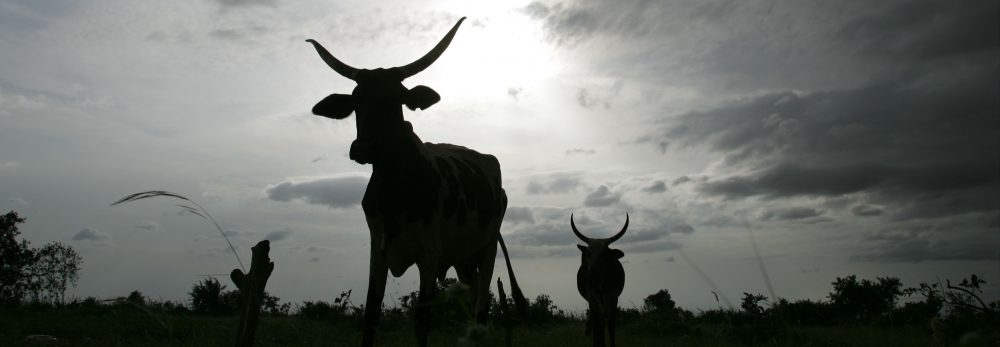
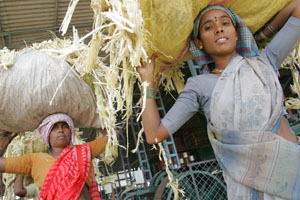

 Michael Blummel
Michael Blummel Iain Wright
Iain Wright Olivier Hanotte
Olivier Hanotte John McDermott
John McDermott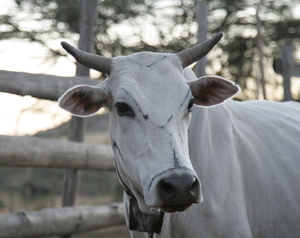
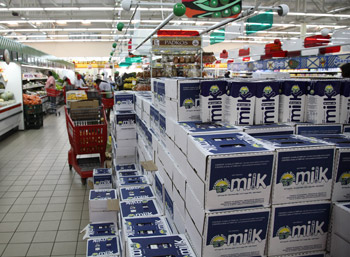

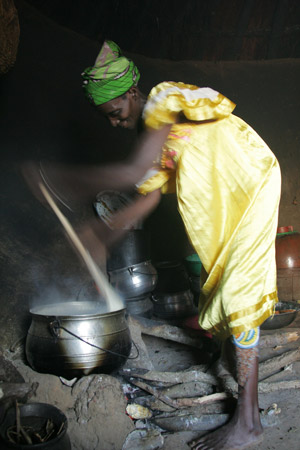
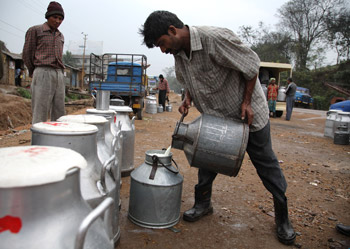
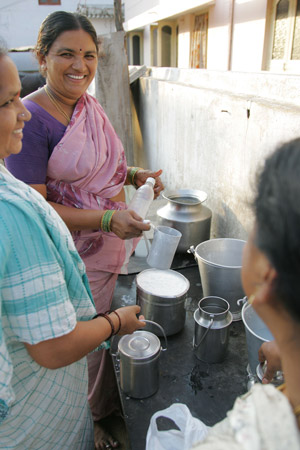
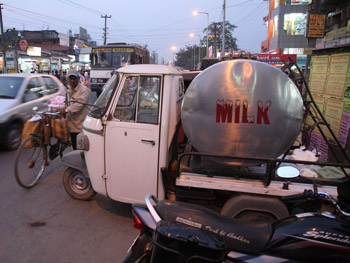
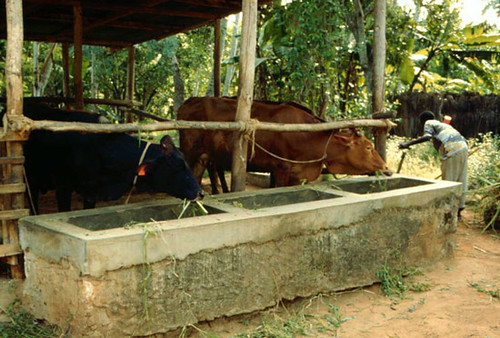
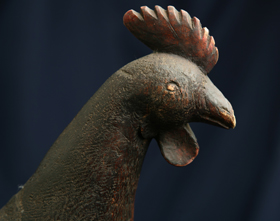
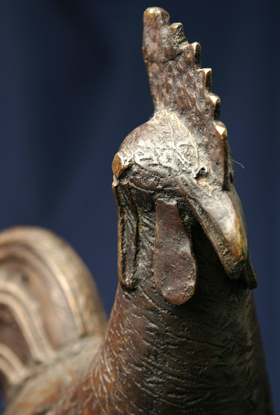
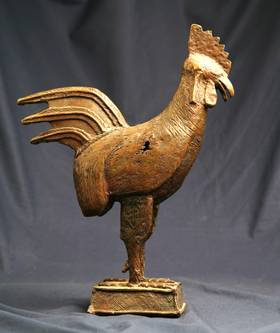
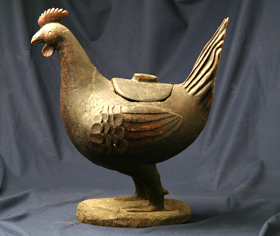
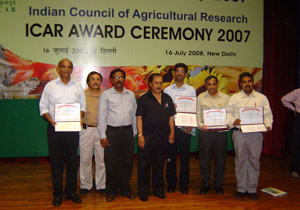
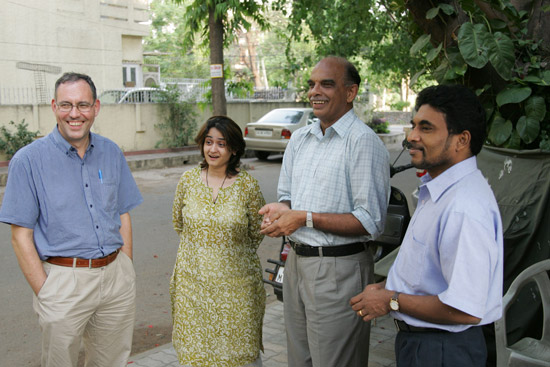



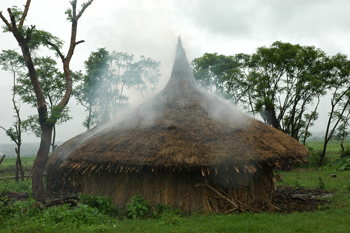
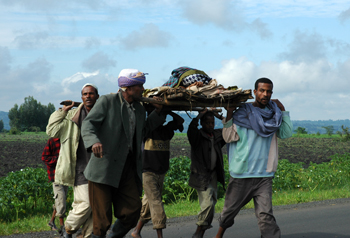
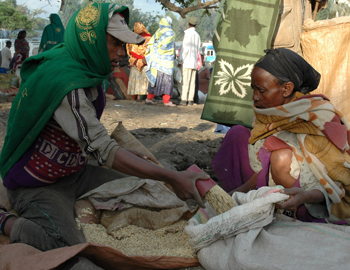
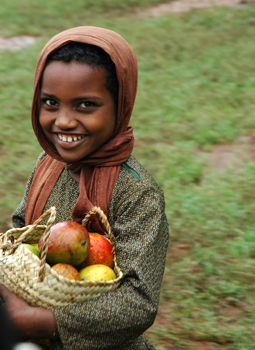
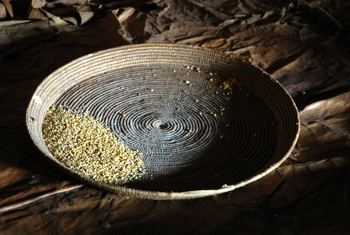
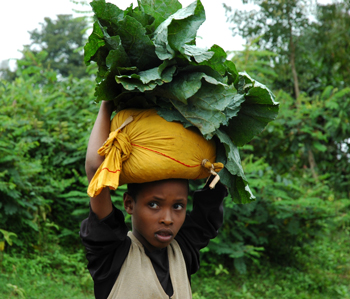

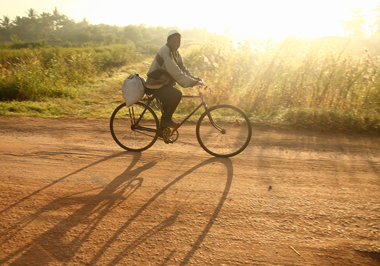



 Joseph Karugia
Joseph Karugia